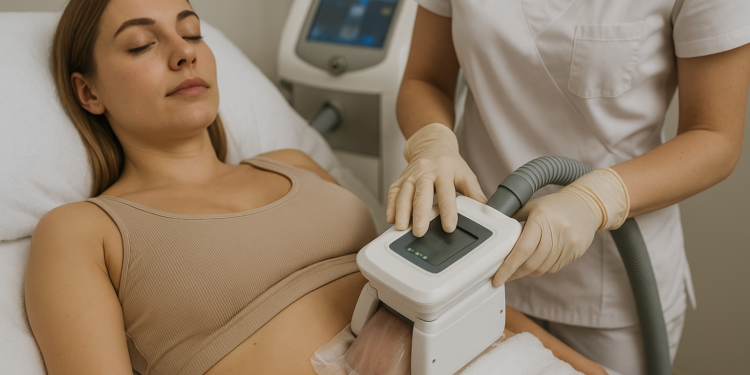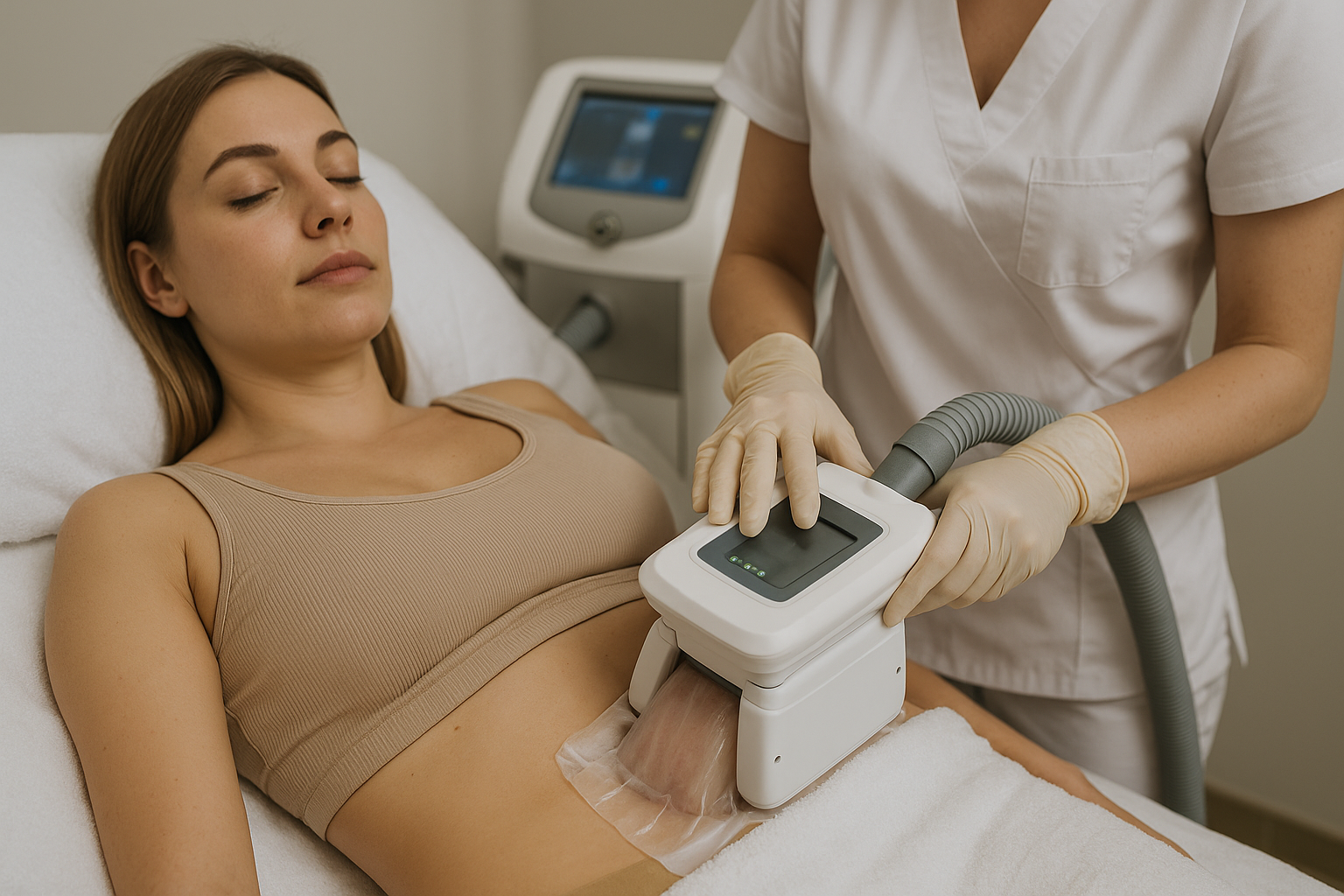Nonsurgical Fat Reduction: What to Know Before Choosing a Fat-Freezing Procedure

Table of Contents
- 1 What Is Fat-Freezing? The Basics
- 2 Who Makes a Good Candidate?
- 3 How Fat-Freezing Procedures Work
- 4 Effectiveness and Clinical Evidence
- 5 Potential Risks & Considerations
- 6 Preparing for a Fat-Freezing Treatment
- 7 Aftercare and Recovery Tips
- 8 Popular Alternatives to Fat-Freezing
- 9 Tips for Choosing a Safe Provider
What Is Fat-Freezing? The Basics
In recent years, fat freezing—technically known as cryolipolysis—has become a go-to solution for those seeking body contouring without surgery. This noninvasive process uses controlled cooling to target localized fat deposits. Fat cells are cooled to below-freezing temperatures, causing them to crystallize and eventually break down while surrounding tissues remain unharmed.
The popularity of noninvasive body contouring treatment Virginia Beach reflects a growing national trend where convenience, safety, and minimal recovery time are top priorities. FDA-cleared for use on areas like the abdomen, thighs, flanks, back, and under the chin, fat-freezing offers versatility and ease for individuals looking to fine-tune their physique without disruption to their busy schedules.
Who Makes a Good Candidate?
Fat-freezing is ideal for individuals near their target weight but struggle with specific areas of stubborn fat—like love handles, bra bulges, or upper-arm fat—that don’t respond to diet or exercise. It’s not intended for significant weight loss but rather for shape refinement.
Not everyone is a suitable candidate. People with cryoglobulinemia, cold agglutinin disease, or paroxysmal cold hemoglobinuria should avoid treatment. Likewise, pregnant individuals or those with skin infections near the treatment area should be rescheduled. A realistic mindset is key—fat-freezing enhances contours but won’t produce dramatic body changes. A thorough consultation with a licensed provider is essential to determine candidacy.
How Fat-Freezing Procedures Work
Each session starts with a provider marking the treatment area and applying a protective gel pad. A specialized applicator then suctions the fatty tissue into a cooling chamber. Patients often feel pulling or tingling, but the area quickly becomes numb. Sessions usually last 30 to 60 minutes, and multiple zones can sometimes be treated at the same time. During the procedure, many people read, catch up on emails, or simply relax. The cold causes apoptosis (natural cell death), and over the following weeks, the body naturally removes the destroyed fat cells through metabolic processes. For the best results, providers often recommend two to four sessions per area, spaced several weeks apart.
Effectiveness and Clinical Evidence
Does fat-freezing work? According to clinical studies, patients can expect a 20–25% reduction in fat thickness in treated areas after one session. Visible changes may begin within three weeks, but full results typically appear around the 8–12-week mark.
Anecdotal reports mirror clinical data, with many patients noting smoother contours and less pinchable fat. Satisfaction rates are high—Healthline reports that the results would recommend the treatment. That said, results vary depending on factors like genetics, metabolism, and post-care adherence. Multiple sessions often enhance results.

Potential Risks & Considerations
While cryolipolysis has a strong safety profile compared to surgical fat reduction, it’s not risk-free. Most people experience mild side effects such as redness, numbness, swelling, or tingling, usually lasting for a day. Numbness may persist for several weeks but rarely affects daily life.
A rare but documented complication is paradoxical adipose hyperplasia (PAH), a condition in which the treated area enlarges instead of shrinking. Though uncommon, it may require surgical correction, so it’s crucial to choose a trained and experienced provider and undergo a thorough health screening before treatment.
Preparing for a Fat-Freezing Treatment
- Schedule a consultation to assess health conditions and goals.
- Follow your provider’s medications—some may recommend avoiding anti-inflammatories.
- Wear comfortable, loose clothing for easy access and post-treatment comfort.
- Eat a light meal beforehand to avoid discomfort.
- Stay well-hydrated in the days leading up to your appointment.
While preparation is simple, taking a few proactive steps can enhance your experience and improve results.
Aftercare and Recovery Tips
Post-treatment, mild swelling, soreness, or redness is common and typically subsides within a few days. Numbness or tingling can persist for a few weeks. Most individuals return to work or normal activities immediately.
To support healing:
- Gently massage the area to improve comfort and circulation.
- Drink plenty of water to aid lymphatic drainage.
- Wear compression garments if advised.
- Avoid intense exercise for 24 hours; resume light activity as tolerated.
Recovery is typically smooth, and many patients appreciate the simplicity of the process.
Popular Alternatives to Fat-Freezing
Cryolipolysis is just one option among several FDA-cleared body contouring technologies:
- Radiofrequency (RF) lipolysis uses heat to destroy fat cells.
- Laser lipolysis melts fat using targeted laser energy.
- Ultrasound-based devices rupture fat cells using sound waves.
- Liposuction offers surgical fat removal for more dramatic reshaping but requires downtime and post-op care.
Whichever method is chosen, pairing treatment with a balanced lifestyle yields the best long-term outcomes.
Tips for Choosing a Safe Provider
To ensure both safety and results, follow these guidelines:
- Choose providers certified in aesthetic or dermatologic medicine.
- Verify that the technology used is FDA-cleared for your treatment area.
- Ask to see before-and-after photos of actual patients.
- Request a detailed treatment plan with transparent pricing.
- Read independent reviews and testimonials.
Partnering with a knowledgeable, reputable provider minimizes risks and enhances your experience. As technology advances, fat-freezing offers a noninvasive path to body confidence when used responsibly and under expert care.






